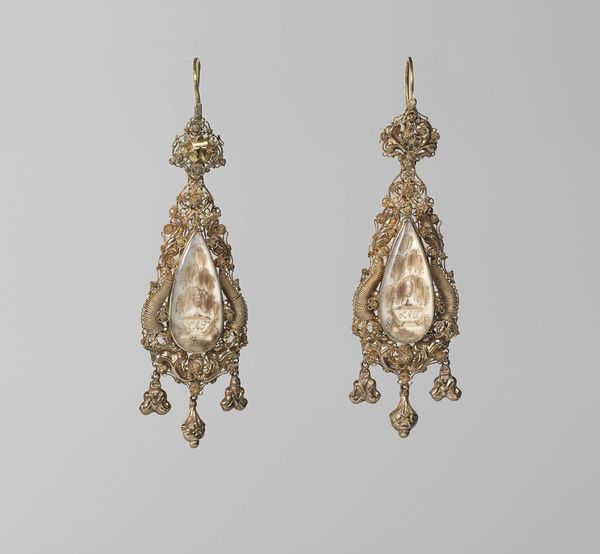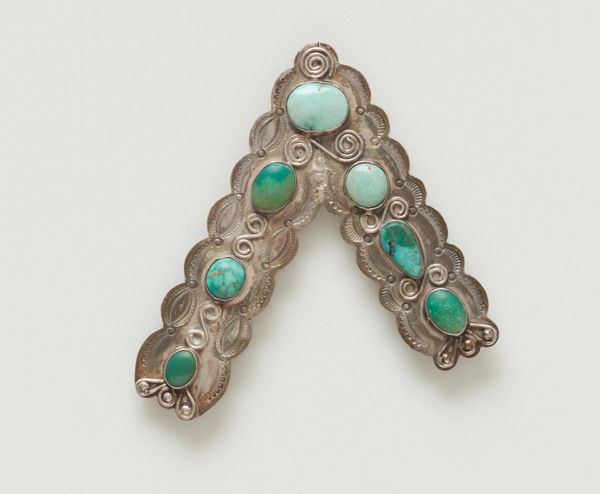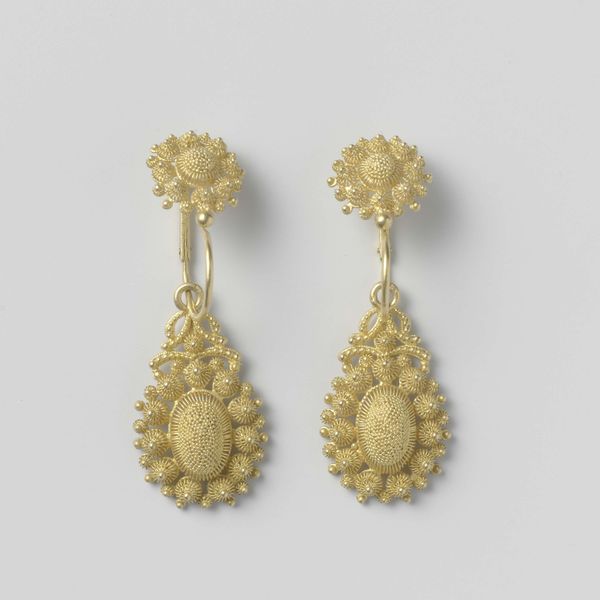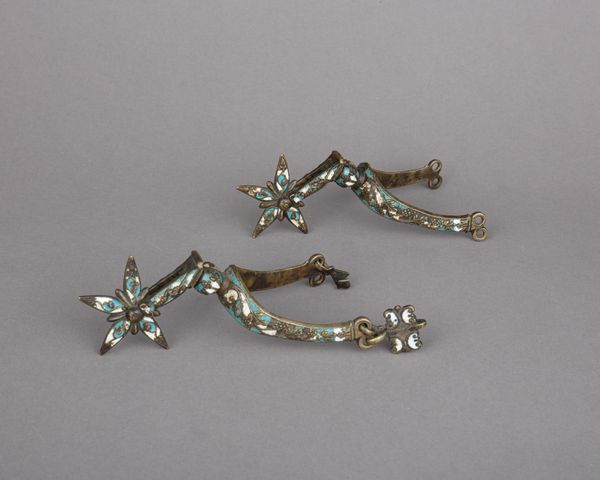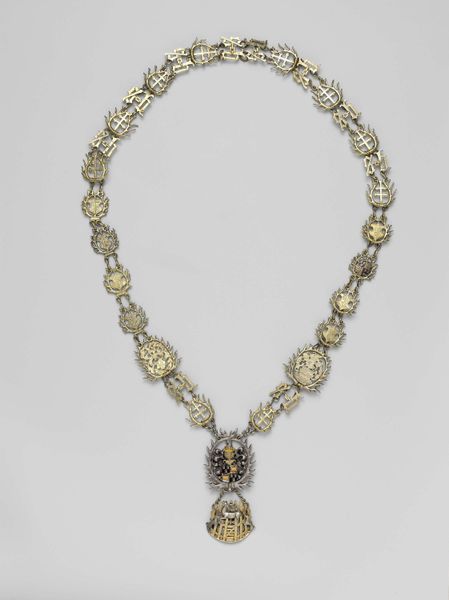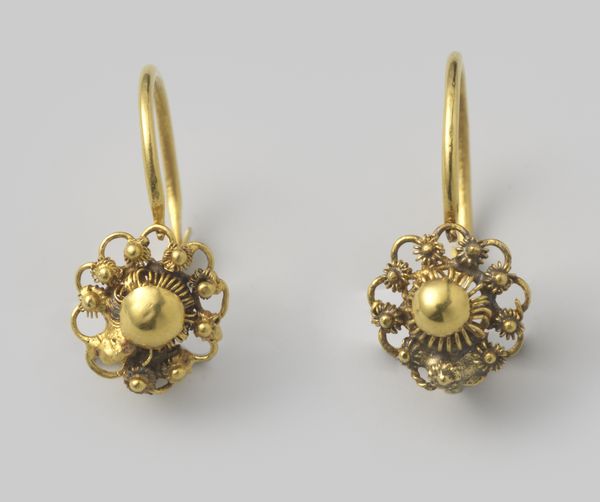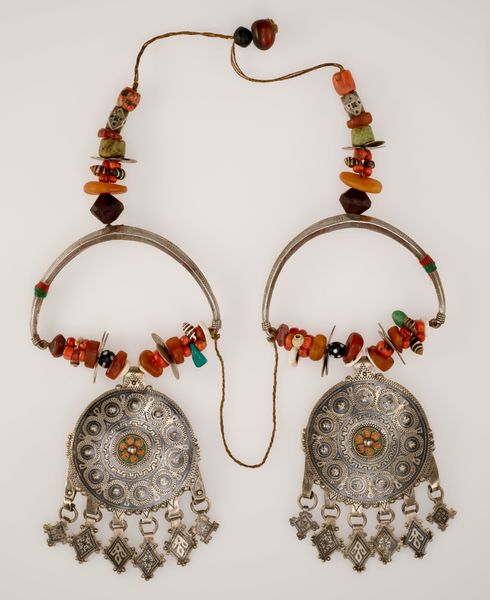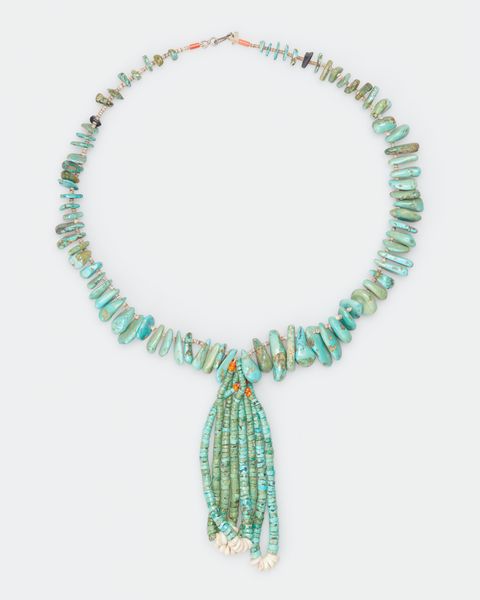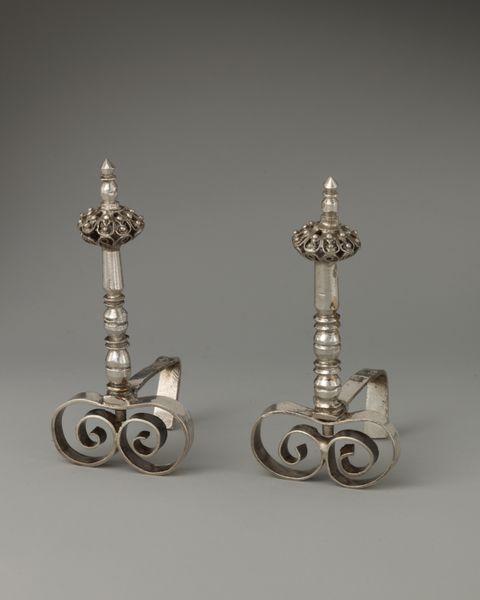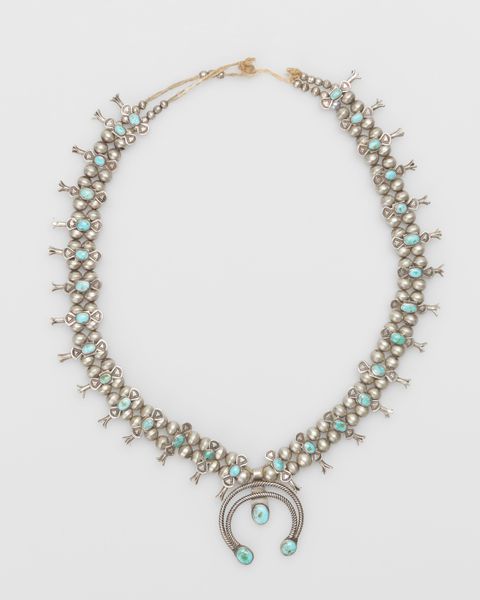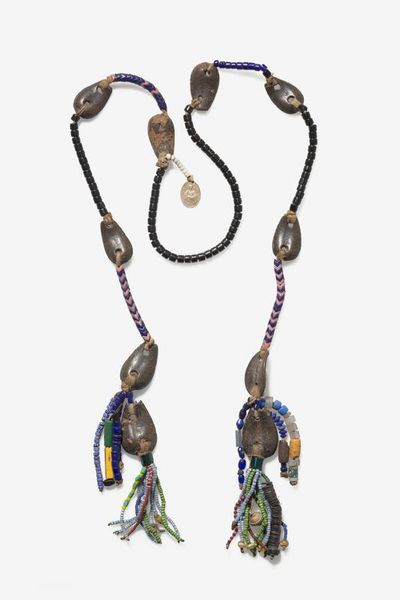
Brooches (Fibula with pectoral) c. early 20th century
0:00
0:00
silver, metal, glass, enamel
#
silver
#
metal
#
glass
#
jewelry
#
enamel
#
islamic-art
#
decorative-art
Dimensions: 34 3/8 x 3 15/16 x 5/8 in. (87.31 x 10 x 1.59 cm)
Copyright: Public Domain
Editor: Here we have a pair of "Brooches (Fibula with pectoral)" created around the early 20th century. The materials listed include silver, metal, glass and enamel. The geometrical symmetry gives the work a feeling of structured elegance, especially when coupled with the richness implied by the materials. What can you tell me about it? Curator: Well, consider the means of production. These brooches, beautiful as they are, speak volumes about labor and resource extraction in early 20th century Morocco. Look at the intricate metalwork. Think of the skilled artisans, probably working in conditions vastly different from what we experience here, who shaped these materials. Editor: That's a perspective I hadn't fully considered. I was just thinking of them as aesthetically pleasing ornaments. Curator: Precisely. And what of the glass and enamel? These weren't produced locally; they represent global trade networks. The brooches are not isolated art objects, but products of a complex interplay between local craft and global capitalism. Ask yourself, who benefits from these beautiful objects and who paid the price? Editor: So, are you suggesting the brooches tell a story of exploitation, as well as artistry? Curator: It's not so much an "either/or" scenario. It's both. Their creation involved skilled labor and artistry, yes, but also potentially exploitative labor practices. Can we separate the appreciation of craft from the critical examination of its conditions of creation? I believe we must consider both. Editor: That's really given me a lot to think about, especially regarding how we view objects outside of just their appearance or artistic skill. Thank you! Curator: And thank you. Reflecting on the entire lifecycle of such decorative artworks enriches our understanding of its artistic value and intricate socio-economic story.
Comments
No comments
Be the first to comment and join the conversation on the ultimate creative platform.
